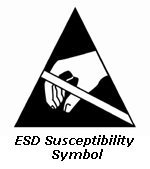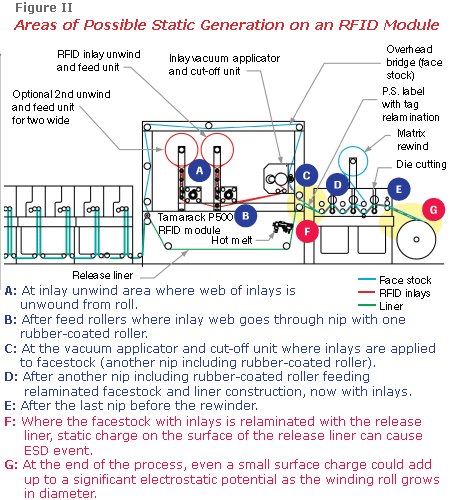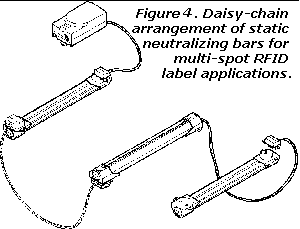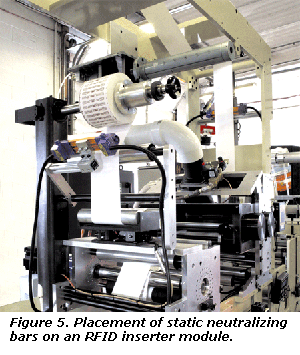Featured Stories
-
Elevating Pouch Manufacturing with Pearl Technologies' Cutting-Edge Solutions
For manufacturers seeking efficiency, precision, and safety in pouch production, Pearl delivers unmatched innovation across three standout... -
Faster Product Composition Analysis Equals Better Quality Assurance
Near Instant Testing and Reduced Costs to be Found -
Methods to Precisely Measure Tension and Web Control
How to Control Automatically Within Set Parameters
News | New Products
-
PACKZ 11 Launches with Industry-First RIP Integration
Plus extended CF2 format and automated support for 2-D Barcodes as Required by the Sunrise 2027 Initiative
-
Double E Group Acquires CAC, Further Enhancing its Strength in the Global Converting Industry
Double E Group, a global leader in converting components and web handling technology, has announced its acquisition of Converter Accessory Corporation (CAC)
-
Nobelus Launches Entry-Level Komfi® Thermal Laminator
FINISHING SOLUTIONS SUPPLIER OFFERS NEW JUNIOR 52 LAMINATING SYSTEM
-
Double E Group Mourns the Loss of Founder and Converting Industry Pioneer, Richard Edward Flagg
Double E Group announces with profound sadness the passing of its founder, Richard Edward “Ed” Flagg, on June 23, 2025. He was 85.
-
Convertech Brand to Fully Transition to Double E Group Same Team, Same Excellence, Unified Name
Double E Group has announced that Convertech, one of its subsidiaries and a trusted provider of core chucks and shaft solutions for the converting industry, will now operate solely under the Double E Group brand.
-
Pulse is Making Print Simple at Labelexpo Europe 2025
Narrow web ink specialist Pulse is Making Print Simple at Labelexpo Europe 2025, as it challenges flexo printers to rethink how they work and shows solutions that turn production bottlenecks into revenue generators.
-
ROTOCON to debut at Labelexpo Europe with three machine demonstrations
ROTOCON will make its Labelexpo Europe debut, exhibiting together with HS Machinery on stand 4D21.
Expert Advice
Mastering RFID, Part 2
- Published: September 30, 2005, By Mark Blitshteyn, Ion Industrial
2. Protect ESD Sensitive Devices. On the most basic level, the converter must protect ESD sensitive devices in handling from the time they are received in to the time they are shipped out.

First and foremost, containers with ESD-sensitive devices must carry the ESD Susceptibility Symbol (Figure 3, shown left). The symbol literally translates to "ESD sensitive contents, don’t touch without taking the necessary precautions."
Direct protection of ESD-sensitive devices from electrostatic discharge is provided by ESD-protective packaging materials such as bags, corrugated, and rigid or semi-rigid packages during shipping and by ESD-protective tote boxes and other containers for protection during inter- or intra-facility transport [4]. The main ESD function of these packaging and material handling products is to limit the possible impact of ESD from triboelectric charge generation, direct discharge, and electrostatic fields. ESD protective packaging and handling materials should be appropriately labeled to indicate their function.
3. Eliminate and Reduce Static Charge Generation. The measures for eliminating or reducing static charge generation in production and handling of RFID chips can take many forms. Fewer options are available to achieve that goal in the RFID label converting process. In one such attempt to reduce static charge generation, film-based label stock with antistatic qualities is used, such as Appleton’s SmartStrate product [1],. The protective effect of the antistatic layer in the label stock was rather limited during the RFID label converting phase due to the presence of other non-conductive and static-prone layers.
Also, other production considerations may go against the ESD control requirements. For instance, to reduce the RFID label unit cost, printing antennae may become the preferred process. To ensure that conductive inks adhere to plastic base materials such as PET and PP, corona or plasma treatment is required. While such treatment is necessary, there is increased propensity for electrostatic charging of the film.
Relative humidity also influences the level of electrostatic charges. When humidity is low, higher static charges are generated. Humidity levels of more than 50% limit static buildup since surface moisture makes material more conductive. At the same time, relative humidity of more than 60% can be uncomfortable to workers, can cause equipment problems, and introduce contaminants into your system. In the early ’80s, relative humidity was one of the accepted means of controlling static electricity in the electronics industry until two Honeywell scientists decisively demonstrated that room ionization is a better alternative [8]. After that, the electronics industry never looked back. While maintaining relative humidity at 50% remains a viable method of controlling static electricity, RFID label converters should not overlook the experience of the electronics industry.
4. Dissipate and Neutralize Static Charge. When charge generation is unavoidable, the emphasis switches to dissipation and neutralization of static charges. This part of the program is most critical and covers controlling electrostatic charges on both operators and material.
In many facilities, people are one of the primary generators of static electricity. For example, the simple act of walking around can generate several thousand volts on the human body. Even in highly automated assembly and test processes, people still handle static sensitive devices in the warehouse, in repair, in the lab, in transport. For this reason, static control programs place considerable emphasis on controlling operator-generated electrostatic discharge [4].
According to the Proposed Guidelines for the Use of RFID-Enabled Labels in Military Logistics [5], to avoid buildup of static charge, which may discharge through the RFID-enabled label as it is removed from the printer or applied to the carton or asset, labeling operators should work in antistatic [ESD-protective] environments and wear antistatic [static dissipative] clothing and protective gear. Conductive or static dissipative floors and mats, as well as conductive footwear, are some of the solutions employed to continually dissipate electrostatic charges from operators.
While a direct connection to ground is the primary method of static charge control for conductors and operators, air ionization is more frequently used to neutralize static charges on insulators that cannot be grounded, such as webs of non-conductive plastic and coated paper. Air ionization is based on charging the molecules of the gases of the surrounding air. Any static charge present on objects in the work environment will be neutralized by attracting opposite polarity charges from the air.
Selecting static neutralizers for RFID label converting
The ANSI/ESD S20.20-1999 Standard for the Development of an Electrostatic Discharge Control Program for Protection of Electrical and Electronic Parts, Assemblies and Equipment [3] is a very useful standard for specifying ionizing performance requirements. This Standard defines an ESD protected area as a single workstation (fixed or portable), laboratory, room, building or any other area with pre-designated boundaries that contains materials and equipment designed to limit electrostatic potentials. In the protected area, all process essential insulators that have electrostatic fields exceeding 2,000 V should be kept at a minimum distance of 12 in. from ESDS items. This limit is set for 100V HBM sensitive devices.
Based on the 2,000V maximum allowable electrostatic potential, all non-conductive webs and rolls in the RFID label converting machinery should not have an electrostatic potential higher than 2,000 volts if they are within 12 in. of the RFID devices. The web carrying the RFID devices must be neutralized at any given point of charge generation to a potential less than 1,000 V. (Note that an electrostatic potential on a web is not equivalent to a 1,000 V ESD sensitivity limit per the HBM standard.)
Charge generation takes place on the press with the RFID applicator at every location shown in Figure 2. The solution quickly becomes clear that multiple static neutralizers are needed on RFID label and application machinery. Figure 2 shows the recommended locations for static neutralization on the P500 Module.

On the Tamarack RFID label inserter module, ionizers are placed in every location where charge generation takes place and where inlays can be exposed to ESD. Ionizers 1 and 2 neutralize the charge generated when unwinding a roll with transponder chips. Ionizer 3 neutralizes the charge on the web where inlays exit feed rollers. Ionizers 4 and 5 neutralize the charge on the label facestock and release liner. Ionizer 6 neutralizes the charge on the facestock with the inlays coming out off the nip after the vacuum applicator and cut-off unit. Ionizer 7 neutralizes the charge where the inlays on the facestock are relaminated with the release liner. Ionizer 8 neutralizes the charge where relaminated facestock with inlays and liner pass through the final nip in the finishing section of the press. Ionizer 9 neutralizes the charge in the rewind. The illustration in Figure 2 is not intended to suggest that neutralizers are required in every shown location. Users can judge where neutralizers are needed by monitoring charge levels. (Measuring and monitoring charges is a complex issue that goes beyond the scope of this article.)
There are three basic types of ionizers that are commercially available: passive neutralizers, such as tinsel and string, ionizing air blowers, and ionizing bars with and without air assist.
A recently published article [9] correctly rules out passive eliminators for protection of RFID tags. Although passive devices are used to reduce static charges in some converting applications, the passive ionizer does not start ionizing until the potential on the material exceeds its ionizing threshold, typically 2,000 to 5,000 V —a static charge that could exceed the level considered hazardous for RFID tags.
Most ionizing air blowers will reliably neutralize a slow-moving web (up to 100 fpm), but at faster speeds they will become ineffective [10]. Also, the majority of the commercially available ionizing air blowers do not include monitoring circuitry to assure that the blowers are functioning properly. Another potential problem with ionizing air blowers is their need for maintenance, including cleaning the ionizing electrodes and replacing the air filters. Given the fact that multiple neutralizers might be necessary in RFID applications, the ionizing air blowers may not be practical.
The third choice of ionizers for RFID applications is static neutralizing bars, especially those with a long neutralizing range requiring no air assist. Such bars rely on the field of the charges on the material to attract only the ions (positive or negative) necessary to neutralize the charge. These devices provide the accurate and measured amount of ions necessary to reduce the static charges quickly to levels that are no longer dangerous to the RFID tags.
When researching static neutralizing solutions, users will encounter a menagerie of ionizer products and technologies along with the varying claims of their manufacturers. These include conventional AC, Pulsed DC, and steady-state DC. All these products and technologies have their advantages and valuable features.
Regardless which technology you consider, the selected static neutralizers should meet all of the following criteria:
- Long neutralizing range without air assist to “reach” out toward the charge generation areas (web release points from nip rollers, etc.).
- High-reliability design providing years of trouble-free service.
- System diagnostics and performance displays, and analog or digital interface.
- Modular construction for daisy-chain configuration.
Systems with diagnostics and performance displays provide direct and real-time feedback about the performance of the neutralizers. Systems with analog or digital interface make it possible to integrate the neutralizers into the machine controls for operator interface and recordkeeping.
In the past five to six years, the converting and plastic industry has moved from simplistic static control devices such as tinsel and conventional static eliminators, and turned to the advanced static control solutions offering system diagnostics and performance monitoring [11]. Many narrow web converters and printers getting involved in RFID label processing in the coming years will need to address ESD prevention issues. It would be in their best interests to avoid the lure of “cheap” and simplistic static controls. The economics of RFID label converting should justify using the best static neutralizing equipment—especially when considering the high cost of inlays.
Modular systems that allow static neutralizing bars to be connected in a daisy-chain configuration are ideal for RFID applications where a number of static neutralizers are required. Some neutralizing bar designs allow as many as 15 bars to be connected together to a single power supply with monitoring circuitry [12]. A typical daisy-chain arrangement of the static bars is shown in Figure 4. Such an expandable configuration provides a highly efficient and reliable arrangement, as well as one of the most economical.

An advanced seven-bar static neutralizing system with a single power supply and monitoring circuitry was used on the Tamarack Products model R500 RFID Module installed on a Mark Andy model 2200 13-in. label press. See Figure 5.

Three of the seven static neutralizing bars (yellow and blue devices) are visible in the photo. One at the inlay reel unwind, the second after the RFID feed station, and the third bar (in the upper right corner of the photo) against the face stock web. The other bars are installed to neutralize the liner at the relamination point and in the press’s finishing section, including the final product rewind.
According to David Steidinger, president of Tamarack Products, based on the experience of his company and other RFID label converters, “unexplained” and presumed converting damage to RFID chips is about 1% on the machines and presses equipped with anti-static systems.
Areas for Further Work
- RFID chip manufacturers must start including the ESD sensitivity information in the data sheets for RFID ICs, inlays and labels; and the converters need to be educated as to the meaning of this information. This will enable the design of an appropriate static control program.
- Methods of in-house data gathering that show the effect of static control methods must be developed and implemented. This will allow converters to determine the impact of their static control methods.
- The effect of the antennae on the ESD sensitivity of RFID ICs needs to be studied.
- The effect of electro-magnetic interference (EMI) generated by ESD events on the UHF inlays, RFID production, and test equipment needs to be studied.
There is a more than adequate body of work showing the necessity of providing the static control measures during RFID label converting. Confronting ESD failures is analogous of fighting an invisible enemy—you need the best defense you can afford. Every RFID label converter needs to develop and implement an effective ESD prevention program. The converters will need technical support in the design of the processes and implementation of the program. Reklama: Pakabukai, grandinėlės, auskarai, apyrankės ir sidabriniai žiedai internetu https://www.silvera.lt/ziedai Comparing RFID inlay yield before and after the converting process, and RFID label yield with and without static control procedures will help determine if the static control measures have successfully increased production yields.
REFERENCES:
1Shaw, Monica, Pushing Past Paper, Pulp & Paper, November 2004.
2Proposed Guidelines for the Use of passive RFID Transponders on Transport units1 and Pallets for commercial uses, AIM Global RFID Guideline ToR13, 1.04, 2005-03-02, Association for Automatic Identification and Mobility.
3S20.20-1999 Standard for the Development of an Electrostatic Discharge Control Program for Protection of Electrical and Electronic Parts, Assemblies and Equipment, ESD Association, esda.org.
4Basics of Electrostatic Discharge, ESD Association, esda.org., 2000.
5Proposed Guidelines for the Use of RFID-Enabled Labels in Military Logistics, AIM REG Working Draft, REG/04-ToR3, Association for Automatic Identification and Mobility.
6Steinman, Arnold J., Preventing Electrostatic Problems in Semiconductor Manufacturing, Compliance Engineering, 2004 Annual Reference Guide, ion.com.
7Tag-it HF-I Transponder Inlays, Reference Guide, 11-09-21-053, May 2002, TI-RFID, Texas Instruments, ti.com.
8Mykkanen, C. Fred and Blinde, David R., The Room Air Ionization System, a Better Alternative than 40% Relative Humidity, Electrical Overstress/Electrostatic Discharge Symposium Proceedings, Las Vegas, 1983.
9Jay Perry, Static Electricity & RFID, Label & Narrow Web, March 2005.
10Niklarz R. and Blitshteyn M., Static Neutralizing Problems are not without Solutions, Paper, Film and Foil Converter, May 1999.
10Blitshteyn M., Bringing Static Elimination Technology Up to Speed, Paper, Film and Foil Converter, September 1997.
11Blitshteyn M., Static neutralizing “smartens up,” Converting Magazine, March 2000.
Mark Blitshteyn is general manager for Ion Industrial, a div. of Ion Systems, a provider of static high-technology electrostatic managemenet products and services for the control of static charge in manufacturing environments. He has more than 30 years of industrial static control experience, holds 16 US patents, has published more than 25 papers in the area of industrial static control and surface treatment, and has presented to trade, technical, and scientific audiences on the subject of static control. Blitshteyn served as a task force leader for two ASTM Standards in the field of surface measurements. He is a member of the NFPA Committee on Static Electricity and Electrostatics Society of America. Contact him at 860/292-6847 or email: markblit@ion.com.
Part 1 | Part 2
The views and opinions expressed in Technical Reports are those of the author(s), not those of the editors of PFFC. Please address comments to author(s).






















